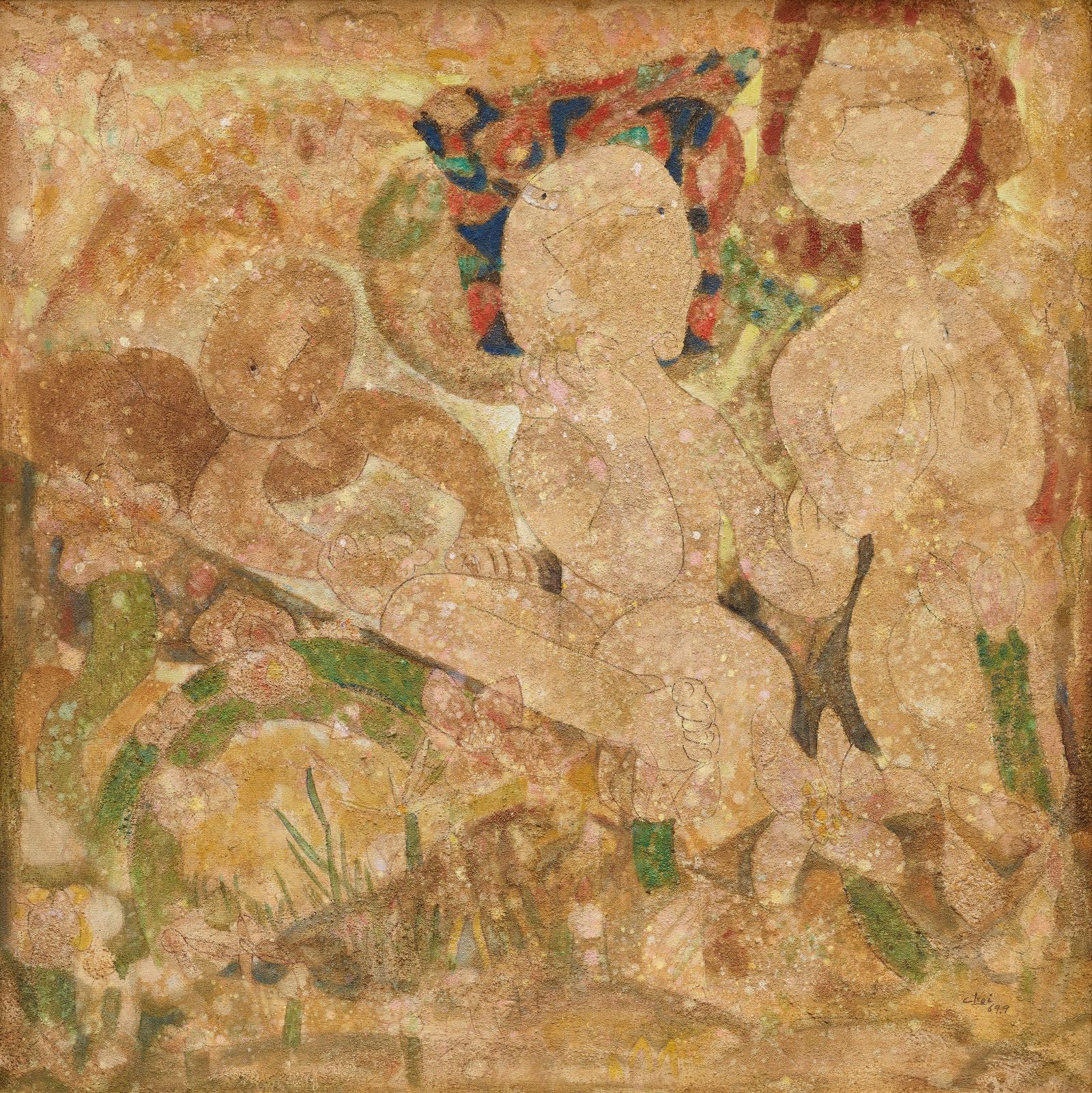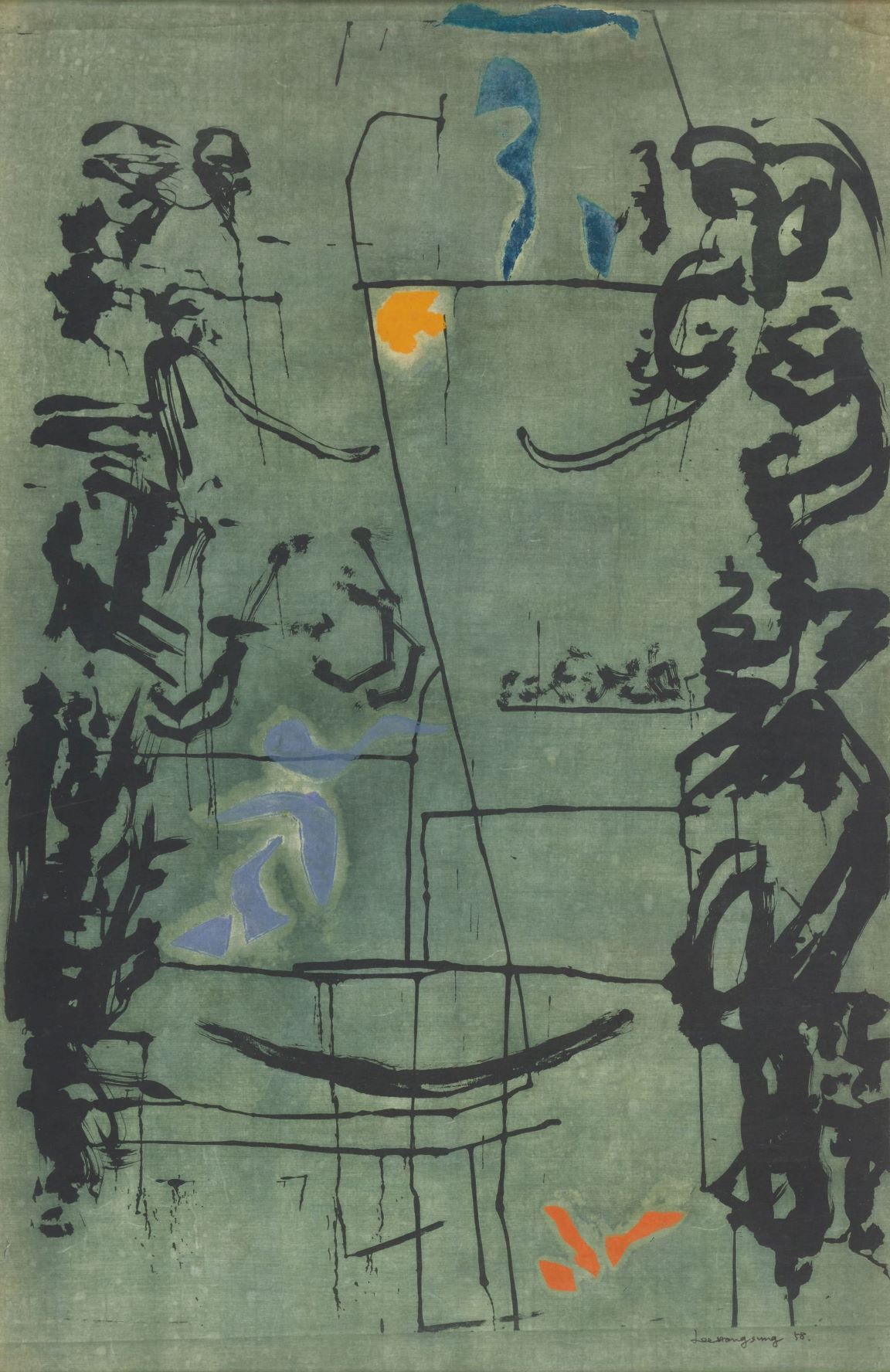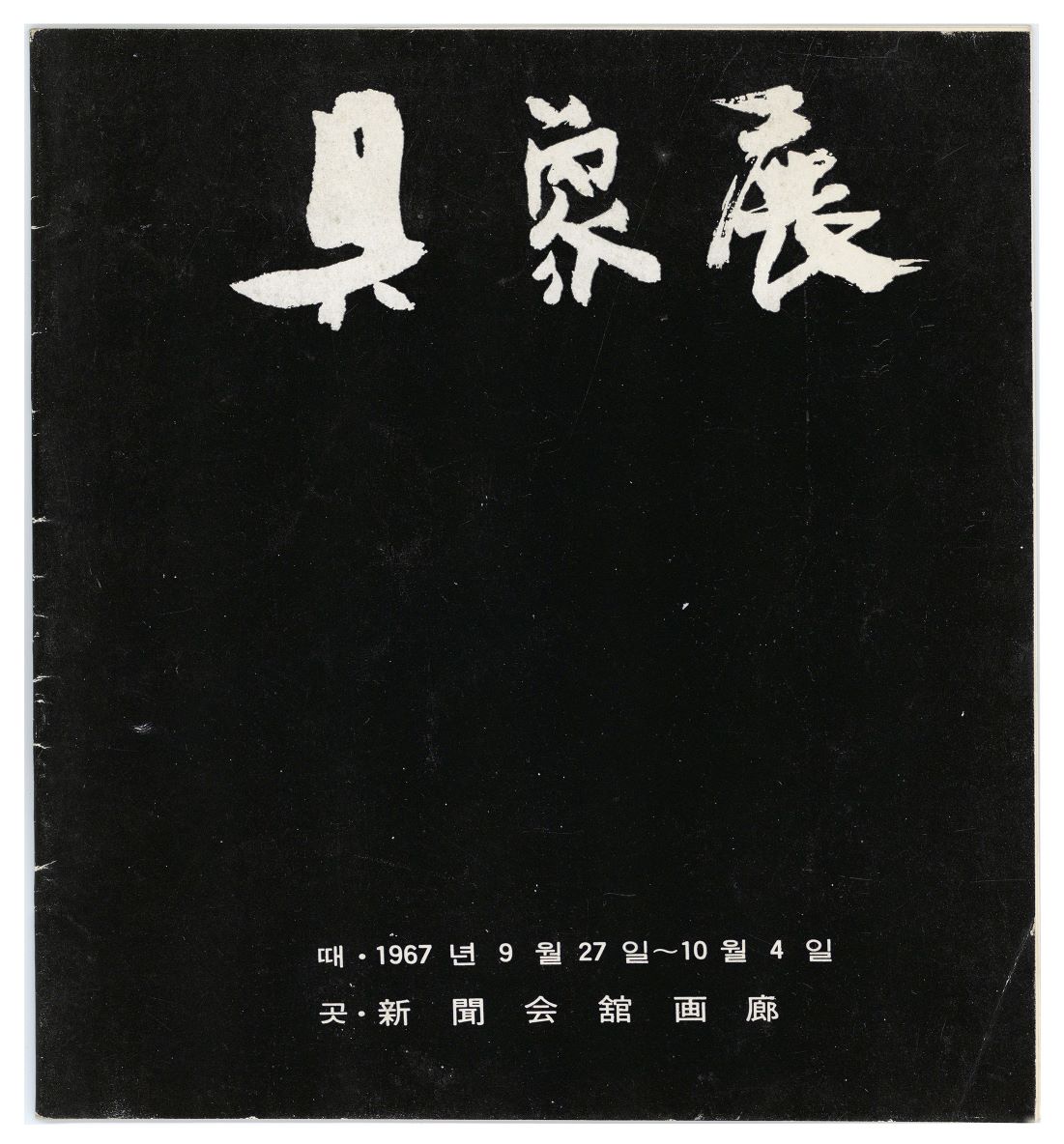
Choi Youngrim, The Merciful Heart of Buddha, 1969, Oil paint and soil on canvas, 117×117cm. MMCA collection
Choi Youngrim
* Source: Multilingual Glossary of Korean Art. Korea Arts Management Service
Related
-

Contemporary Printing Arts Exhibition for Decade
Contemporary Printing Arts Exhibition for Decade was an exhibition held by the Korea Prints Association [Hanguk panhwa hyeophoe] from August 5 through 30, 1969 at Sinseong Coffee Shop (on the fourth floor of the National Assembly Hall) and Changil Coffee Shop (behind the UNESCO Center on 2-ga Myeong-dong). The Korea Prints Association was founded in 1958 with the goal of revitalizing the printmaking industry and popularizing the concept of prints. Moreover, it requested the establishment of a prints section at the National Art Exhibition (Gukjeon), held a competition to encourage interest in printmaking as an expressive medium of art, and fostered new talents. The founding of such an organization representing Korean print circles signaled the beginning of contemporary prints in Korea. The Contemporary Printing Arts Exhibition for Decade featured Buddha’s Spirit (1958) by Lee Hangsung, president of the Korea Prints Association, Work (1958) by Kim Youngjoo, Animal (1959) by Bae Yoong, Buddha (1960) by Park Sungsam, Transportation (1967) by Kim Sangyu, and Lotus Pond (1968) by Choi Youngrim. The exhibition also presented works by Kang Whansup, Kim Choungza, Kim Chonghak, Yoo Kangyul, Youn Myeungro, Rhee Sangwooc, Chung Kyu, Choi Dukhyu, Moon Woosik, and Chun Sangbum. This exhibition, which introduced these artists’ early and recent works, allowed viewers to understand changes in the decade since the establishment of the Korea Prints Association.
-

Korean Contemporary Printmakers Association
The Korean Contemporary Printmakers Association was founded in January 1968 to promote the distribution of and understanding about modern Korean prints while establishing a network between members. It was led by artists such as Kang Whansup, Kim Minja, Kim Sangyu, Kim Choungza, Kim Chonghak, Kim Foon, Bae Yoong, Suh Seungwon, Yoo Kangyul, Youn Myeungro, Rhee Sangwooc, Chun Sungwoo, and Choi Youngrim. It has played an important role in the revival of Korean prints, including holding regular association exhibitions, discovering and supporting artists, sharing knowledge on print through training sessions, and planning international exchange exhibitions. It has helped to produce leading artists in the Korean print field and organized joint exhibitions with various overseas artists to create a place for art exchanges. In 1996, the association announced regulations on original prints to provide an institutional system for the global internationalization of modern Korean print and the identification of Korean prints. Currently, more than 400 members are active.
-

Lee Hangsung
Lee Hangsung (1919-1997) was a Western-style painter and printmaker who pioneered Korean contemporary printmaking and a leading publisher who promoted the publication and dissemination of art books. He learned painting from Kwon Jungrok, a Western-style painter active in Daejeon, and worked as a stage artist at Dongyang Theatre in Seoul. In 1945, he established a publishing company Munhwa Gyoyuksa and published art textbooks for elementary, middle, and high schools and art books such as Seoyang misulsa (History of Western art) and Segye misul jeonjip (Collection of world art). In 1956, he established another publishing company Sinmisulsa and published Sin Misul (New art), the first art magazine in Korea, thus exerting influence upon the formation of the culture of art criticism. Lee Hangsung led the founding of the Korea Prints Association [Hanguk panhwa hyeophoe] along with Yoo Kangyul, Chung Kyu, Choi Youngrim, and others. In 1958, Lee held the first solo exhibition of lithographs by a Korean artist. Winning an honorable mention for the lithograph Tender Heart of the Buddha at the fifth International Biennial of Contemporary Color Lithography held in 1959 at Cincinnati Art Museum in the U.S., he secured his place in the Korean art scene as a printmaker. Later, he produced print works using Joseon-era wooden blocks that were used for printing old books, letterheads, book covers, and those for imprinting patterns on rice cakes. In his later years, he continued to create works that revealed his Eastern spirituality by pictorializing Chinese characters, such as “念” (yeom, meaning idea), “情” (jeong, meaning affection), “思” (sa, meaning thought), and “心” (sim, meaning mind). Lee contributed to the development of art education by serving as president of the Korean Art Education Association [Daehan misul gyoyuk gyeophoe] and chairman of the Korean Committee of the International Society for Education [Gukje misul gyoyuk hyeophoe hanguk wiwonhoe].
Find More
-

Exhibition of Gusangjeon
Exhibition of Gusangjeon is the name of regular exhibitions held by the Gusanghoe, an organization of Western-style painters established in September 1967. The Gusanghoe was formed with the aim of “eliminating the misconception that abstraction is more advanced than figuration in art history.” The Gusanghoe members who participated in its inaugural exhibition held at the Seoul Press Center were Park Hangsup, Ahn Young-il, Lee Bongsang, Park Changdorn, Park Sungwhan, Park Soukho, Song Kyung, Choi Youngrim, Kim Yeongduk, Park Youngsung, Park Kosuk, Kang Woomoon, Chung Kyu, Kim Huije, Jeong Junyong, Chung Keonmo, Shin Sukpil, Hong Jongmyoung, and Chun Sangsoo. They were “semi-abstract painters” who explored the middle ground between realism and abstraction and pursued a painting world closely related to reality and figurative paintings that expressed an artist’s artistic creative will. In the article “The Tenth Anniversary of Gusangjeon” featured in the Chosun Ilbo newspaper on August 14, 1973 to introduce the tenth edition of the Gusangjeon, the members’ works were described as “being unrestrained, regardless of realism or abstraction, fusing nature with subjective feelings, and giving them individualistic and diverse expressions.” Since the fourth edition held in 1969, the Gusangjeon exhibition had begun to be accompanied by a competition. In 1979, The Tenth Anniversary Exhibition of Gusangjeon was held at the National Museum of Modern Art, Korea (now MMCA). In 2012, the Korea Contemporary Fine Art Exhibition was held at the Hangaram Art Museum of the Seoul Arts Center in commemoration of the forty-sixth anniversary of the founding of Gusanghoe. As of 2023, the ninety-ninth member exhibition and the fifty-second competition were held.
-

Chung Kyu
Chung Kyu (1923-1971) was born in Goseong, Gangwon-do. He graduated from Gyeonggi Public Commercial School in 1941 and moved to Japan to attend the Department of Western Painting at Teikoku Art School. He returned to Korea in 1944 and stayed in Busan during the Korean War, moving to Seoul to be a researcher at the Korean Visual Art Research Institute from 1954 to 1962. He studied prints and ceramics in Rochester, New York, USA on a one-year invitation from the Rockefeller Foundation. After he came back, he expanded his art from painting to prints and ceramics. He was a founding member of the Korea Art Critics Association in 1956, the Korea Prints Association [Hanguk panhwa hyeophoe] in 1958, and the Korean Art Critics Association in 1960. He established the Institute of Korean Traditional Ceramics Craft in 1960. He contributed his prints to the Contemporary Art Exhibit sponsored by Chosun Ilbo and created ceramic murals at Oyang Building and Namsan Liberty Center, leaving an important mark on the development of public art in Korea. He worked as an art lecturer at Ewha Woman’s University from 1955 to 1961, at the department of craft, Hongik University from 1960 to 1963, and as a professor of the Department of Ceramics at Kyung Hee University from 1963 to 1971.
-

Creative Art Association
An art association formed in 1957. The establishment of the association was driven primarily by Western-style artists, and most of the founding members were artists in their thirties who were featured in the National Art Exhibition. The art association promoted a collective modern spirit based on the respective creative approaches of the members, regardless of their genre, academic background, and social connections. The association sought to reform the art community from the inside, and to establish an ideology for common action within the association. In 1960, the association temporarily adopted the abbreviated name Changmijeon, and later changed the name to Changjakmihyeop, before once again becoming the Creative Art Association (Changjak misul hyeophoe).






